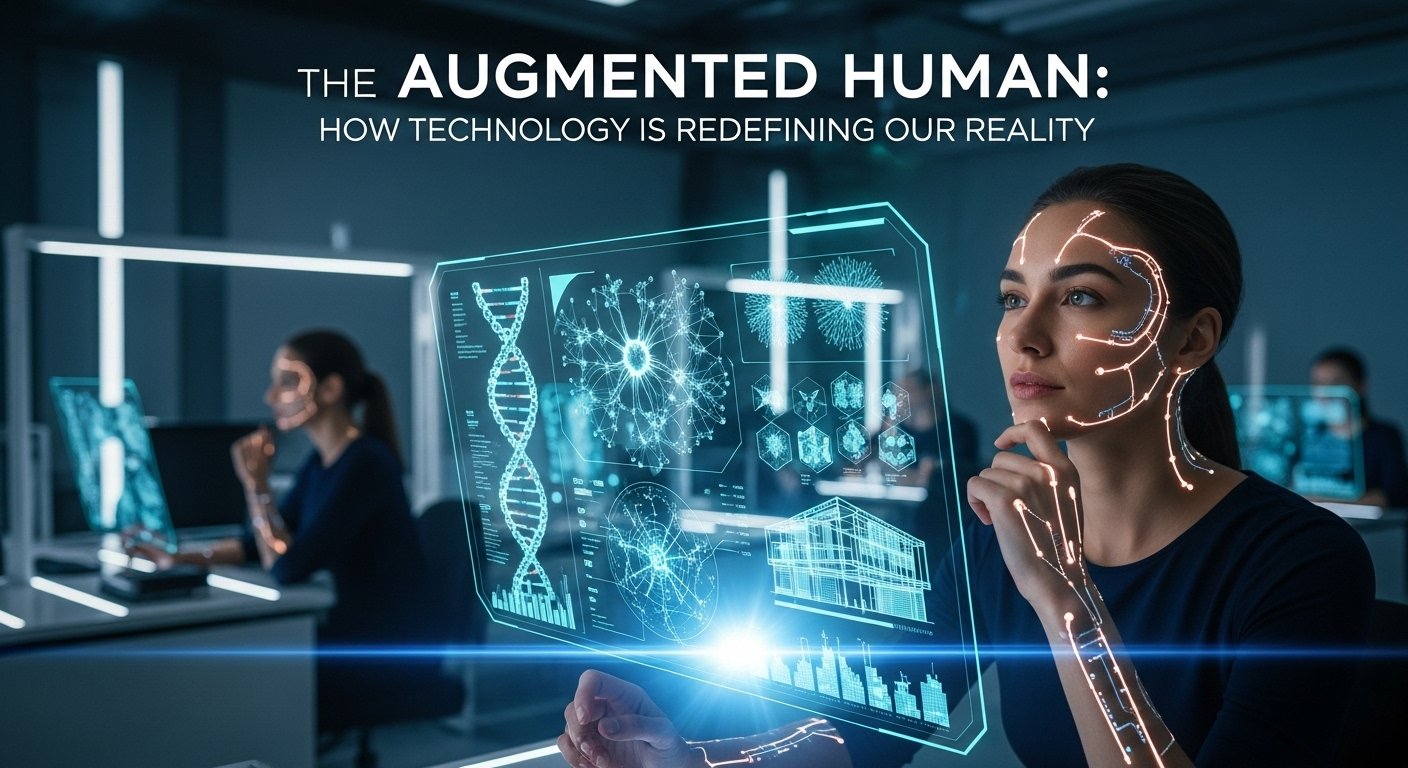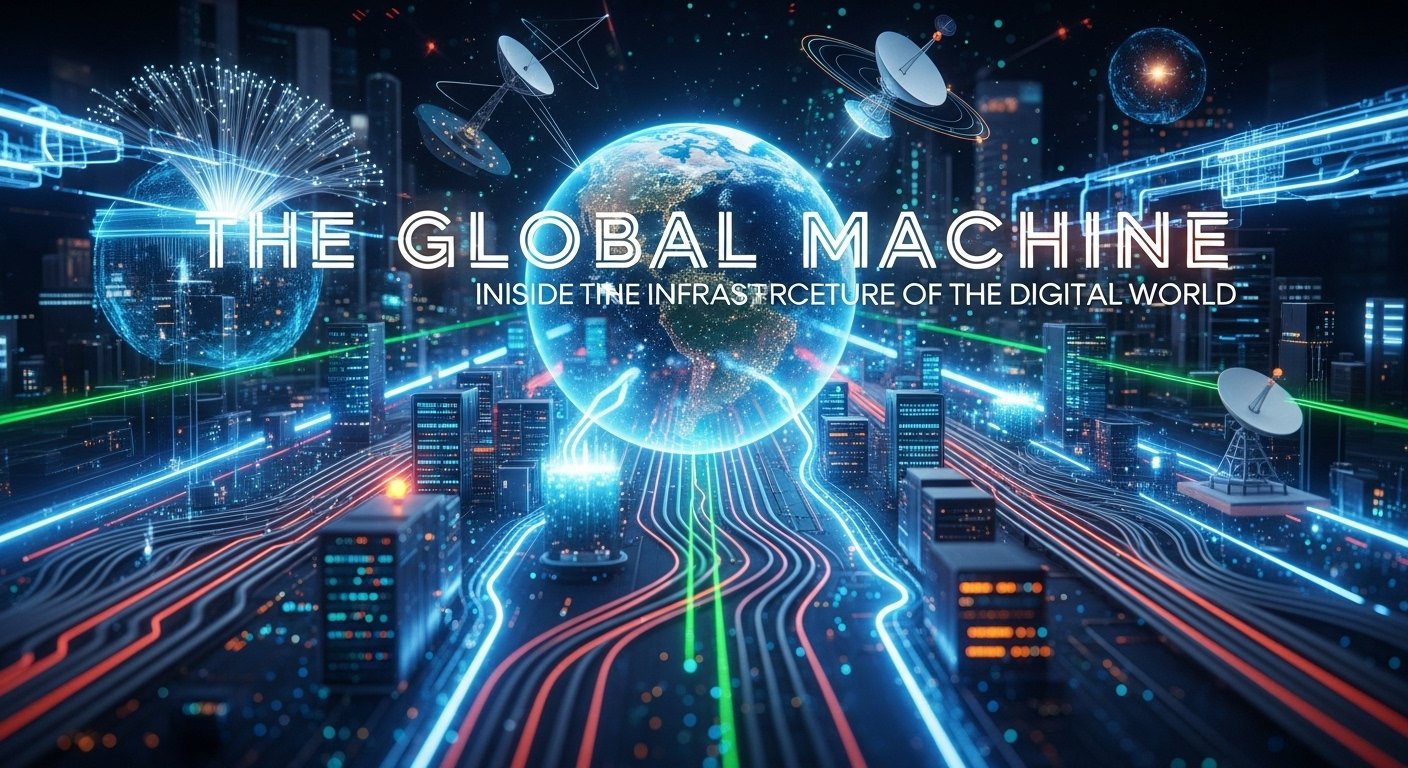In a research lab, a paralyzed individual types a message on a screen using only their thoughts, translated through a brain-computer interface. In an artist’s studio, a generative AI collaborates to produce a hundred variations of a visual theme, providing a spark for a masterpiece. In an ordinary home, a wearable sensor on a diabetic’s arm communicates silently with an insulin pump, forming an artificial pancreas that manages their health while they sleep. This is the frontier of technology in 2025. We have moved beyond an era where technology was merely a tool we held in our hands. We are now entering an age of integration, where technology is becoming an extension of our bodies, our minds, and our senses, fundamentally redefining the human experience itself.
This exploration delves into this profound convergence, examining how technology is augmenting our physical selves, extending our cognitive abilities, and synthesizing a new reality that blends the digital and the physical.
The Augmented Body: Biology as a Real-Time Data Stream
The most intimate frontier of technology is the human body. The approach to health has transformed from a reactive model of treating sickness to a proactive, continuous management of wellbeing, powered by a constant stream of personal biometric data.
The wearables of today have evolved far beyond simple step counters. Smart rings, watches, and subcutaneous sensors now monitor a sophisticated array of vital signs: heart rate variability, blood oxygen levels, sleep cycle quality, and body temperature. For millions, this is not just data; it is a personalized early-warning system. The true revolution, however, lies in closing the loop. An insulin pump that automatically adjusts its dosage based on a real-time glucose monitor is a prime example of an artificial biological system working in harmony with the body.
This data, when combined with advances in genomic sequencing, is ushering in the era of truly personalized medicine. Treatments and preventative health plans can now be tailored not just to a person’s condition, but to their unique genetic makeup and lifestyle data. Beyond monitoring, direct physical augmentation is advancing rapidly. Neuroprosthetics—artificial limbs that can be controlled by the user’s nervous system and even provide sensory feedback—are restoring mobility and a sense of touch. On the horizon, therapeutic gene-editing technologies like CRISPR are moving from theory to clinical application, holding the potential to correct genetic disorders at their source. Our biology is becoming a readable, writable, and upgradeable platform.
The Extended Mind: AI as a Cognitive Partner
If our bodies are being augmented, our minds are being extended. As of 2025, Artificial Intelligence, particularly large language models and generative AI, has become a ubiquitous cognitive utility. It functions as an external hard drive for humanity’s knowledge and a co-processor for our thoughts. A software developer uses an AI assistant to write and debug code, accelerating their workflow exponentially. A scientist uses AI to analyze vast datasets and summarize decades of research in minutes. A student uses it as a tireless, personalized tutor to understand complex subjects.
This is not a replacement for human thought, but a partnership. This symbiosis is most apparent in creative fields. An architect can now generate dozens of conceptual building designs based on a set of parameters, freeing them to focus on curation and refinement. A musician can collaborate with an AI to explore novel harmonic progressions or rhythmic patterns, breaking through creative blocks. The human creator remains the ultimate arbiter of taste, emotion, and intent, but their creative palette has been infinitely expanded.
Looking further, Brain-Computer Interfaces (BCIs) represent the ultimate vision of this cognitive extension. While still primarily in clinical and research settings, their progress is significant. BCIs are already allowing people with severe paralysis to control computers, robotic arms, and communication devices directly with their minds. The long-term trajectory points toward a future where a direct neural link could become a new paradigm for human-machine interaction, a prospect that carries both immense promise and profound ethical questions.
The Synthesized Reality: Blurring the Physical and Digital
Our perception of reality itself is being augmented. The initial hype around a single, all-encompassing “metaverse” has given way to a more practical and integrated spectrum of mixed realities.
Augmented Reality (AR) is becoming a layer of useful, contextual information overlaid onto the physical world. Through smart glasses or a phone’s camera, a mechanic can see digital instructions superimposed on an engine they are repairing. A tourist can see historical information pop up over ancient ruins. AR is not about escaping reality, but about enhancing it with relevant, real-time data.
Virtual Reality (VR) has found its footing in deeply immersive experiences. It is a powerful tool for specialized training, allowing surgeons to practice complex procedures or pilots to simulate emergency scenarios in a zero-risk environment. It is also a thriving platform for gaming and highly social virtual events that connect people across vast physical distances.
The level of immersion in these new realities is a function of several factors, which can be conceptually understood as:
I=(Srealism+Interactivity)×Agency
Where the sense of Immersion (I) is driven by the sum of Sensory Realism and Interactivity, which is then amplified by the user’s sense of Agency—their ability to make meaningful choices that affect the virtual environment. As these factors improve, the boundary between what is “real” and what is “virtual” becomes increasingly porous.
Conclusion: The New Human Question
The narrative of technology in 2025 is one of dissolving boundaries. The line between sickness and health is being replaced by a continuum of managed wellbeing. The line between a human thought and a computer’s output is blurring into a collaborative process. The line between the physical world and digital information is merging into a single, synthesized reality.
This convergence is arguably the most significant transformation in human history. It forces us to ask new questions about our identity. As we augment our bodies, extend our minds, and blend our realities, what does it mean to be human? Where does the self begin and the technology end? This is not a technical question; it is a deeply philosophical one that will define the coming century.
The challenge ahead is not simply to innovate, but to integrate. We must guide this powerful convergence with wisdom, ethics, and a profound sense of our own values. The goal is to ensure that in our remarkable quest to extend our capabilities, we do not diminish our humanity, but rather, enrich it.



